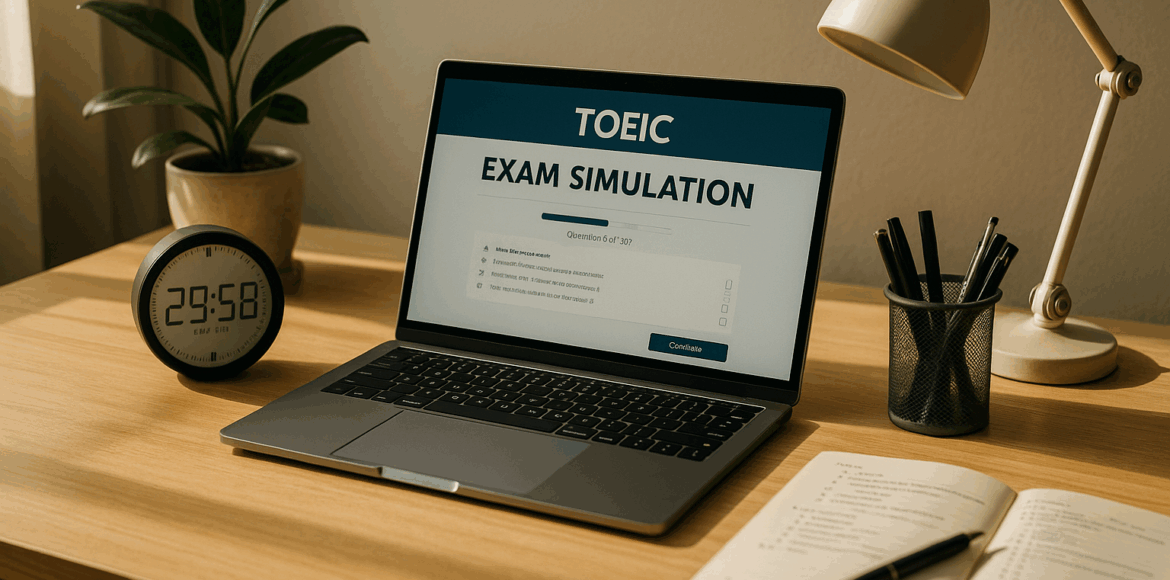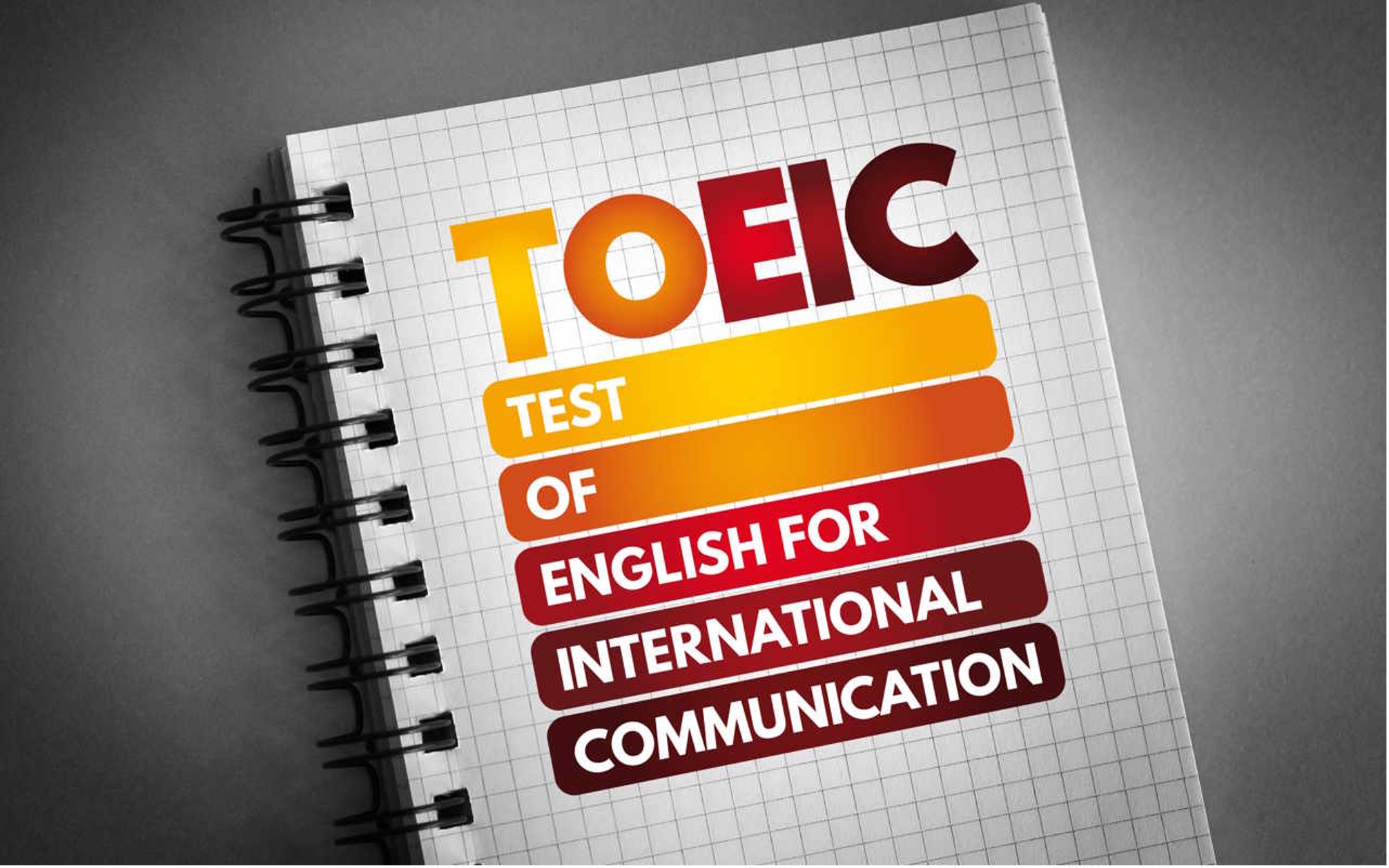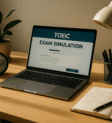
Home TOEIC Exam Simulation Setup and Timing Tips
Unlock your highest TOEIC score by mastering exam conditions from the comfort of your home. This comprehensive guide provides expert advice on setup, precise timing, and strategies to turn practice into perfection. #TOEICTest #HomeExam #TestPrep #TOEICSimulation #TimingTips
Are you aiming for a top TOEIC score but find the thought of the official test day daunting? Or perhaps you’re looking for the most effective way to gauge your current English proficiency under exam-like pressure? Simulating the TOEIC exam in your own home is an incredibly powerful strategy. It’s not just about answering questions; it’s about mastering the environment, the clock, and your own nerves before you even step into the test center.
This guide will walk you through everything you need to know to create an authentic TOEIC exam experience at home, focusing on crucial setup details and, most importantly, effective timing strategies for both the Listening and Reading sections. By meticulously replicating test conditions, you’ll build confidence, identify weaknesses, and significantly enhance your performance. For a broader understanding of how practice tests fit into your overall preparation, check out our Complete TOEIC Practice Test Guide for 2025 Success.
The Power of Realistic Home TOEIC Simulations
Taking a TOEIC practice test is good. Taking a TOEIC practice test under conditions that precisely mirror the official exam is game-changing. Home simulations go beyond casual practice; they are dress rehearsals for success. Why is this so crucial?
- Familiarity Breeds Confidence: The more you replicate the test experience—the timing, the format, the pressure—the less intimidating the actual exam will feel. You’ll know what to expect, reducing anxiety and allowing you to focus purely on the questions.
- Pinpoint Timing Issues: The TOEIC is a race against the clock. Home simulations allow you to identify exactly where you’re losing precious seconds or minutes. Are you spending too long on Part 5? Do you rush through Listening Part 3 questions? This is where you find out.
- Develop Stamina: The full TOEIC Listening and Reading test is a two-hour marathon. Practicing the entire test in one sitting, without unscheduled breaks, builds the mental and physical stamina required to maintain peak performance.
- Personalized Feedback Loop: Simulating in your own environment helps you understand what *you* need to control for optimal focus. Is your chair uncomfortable after an hour? Does a distant noise break your concentration? These are valuable insights.
By treating each home simulation with the seriousness of the real exam, you transform abstract knowledge into practical, time-managed skills. It’s an investment that pays substantial dividends on test day. Consider exploring Red Swan Tutor for high-quality practice materials that can make your home simulations even more effective.
Setting the Stage: Your Ideal Home Test Environment
Creating an authentic test environment is paramount for a successful home TOEIC simulation. Your goal is to minimize differences between your practice sessions and the actual test day experience. This involves gathering the right materials and curating the perfect atmosphere.
Essential Materials for Your Simulation
Before you begin, ensure you have the following items readily available:
- A full-length, high-quality TOEIC practice test: Use a reputable source that mirrors the current test format and difficulty. Red Swan Tutor offers resources designed for this purpose.
- Printable Answer Sheet: Mimic the bubbling process. ETS often provides sample answer sheets online, or your practice test provider might include one.
- Pencils: Use HB or #2 pencils, just like in the official test. Have a few sharpened and ready.
- A good quality eraser: Clean erasures are important.
- A dedicated timer: A simple digital kitchen timer or a stopwatch is ideal. Avoid using your smartphone if it’s a source of potential distraction or if you tend to check notifications. The goal is uninterrupted focus.
- Audio playback device: For the Listening section, ensure you have a reliable way to play the audio files without interruption (e.g., computer, MP3 player). Test the volume beforehand.
- Headphones (Optional but Recommended): If your practice test audio is designed for headphone use, or if it helps you focus and block out minor ambient sounds, use a comfortable pair. Test centers often provide headphones for the Listening section.
Crafting the Perfect Test-Taking Atmosphere
The environment plays a significant role in your ability to concentrate and perform under pressure:
- Choose a Quiet, Undisturbed Room: This is non-negotiable. Select a room where you are least likely to be interrupted. A bedroom, study, or any quiet corner of your home can work.
- Ensure a Comfortable Desk and Chair: You’ll be seated for at least two hours. Your desk should be clear of clutter, providing enough space for your test materials. Your chair should support good posture.
- Optimize Lighting: Good lighting prevents eye strain and helps maintain alertness. Natural light is best, but if unavailable, ensure the room is well-lit without glare on your test paper or screen (if using a digital timer/audio).
- Eliminate ALL Distractions:
- Turn off your phone or put it in another room. Silence all notifications on your computer if it’s being used for audio.
- Inform household members that you are taking a simulated exam and should not be disturbed for the entire duration (approximately 2 to 2.5 hours, including setup).
- Close unnecessary browser tabs and applications on your computer.
- Remove any study notes, dictionaries, or other aids from your sight.
Crucial Reminder: The “no distractions” rule is the cornerstone of an effective home simulation. Any interruption breaks the authenticity and reduces the value of your practice. Treat this time as sacred. For students juggling multiple responsibilities, our platform’s mobility allows practice even on the go, but for full simulations, a dedicated quiet space is key.
Deconstructing TOEIC Timing: A Practical Guide for Home Simulation
The TOEIC Listening and Reading test is a timed assessment, and mastering its pacing is as important as knowing the content. The entire test lasts approximately 2 hours, divided into a 45-minute Listening section and a 75-minute Reading section. There is no scheduled break between these sections. Your home simulation must strictly adhere to these timings.
| Section Focus | Official Duration | Key Home Simulation Timing Tip |
|---|---|---|
| Listening Section (Parts 1-4) Photographs, Question-Response, Conversations, Talks | Approx. 45 minutes | Start your timer when the audio begins. Practice previewing questions for Parts 3 & 4 during their respective audio directions. Answer decisively and move on; you cannot pause or replay audio. |
| Reading Section (Parts 5-7) Incomplete Sentences, Text Completion, Reading Comprehension | 75 minutes | Start a fresh 75-minute countdown immediately after the Listening section. Allocate specific time blocks for each part (e.g., Part 5: ~15-20 mins, Part 6: ~8-10 mins, Part 7: ~45-50 mins). Practice rigorous pacing. |
| Overall Simulation Integrity Continuous Test Experience | 2 hours (plus instructions) | Run the Listening and Reading sections back-to-back without any extended breaks. This builds the mental stamina and focus required for the actual test day. Small sips of water are okay if discreet. |
Listening Section: Race Against the Clock (at Home)
The Listening section’s timing is dictated by the audio playback. Your main task is to keep up and make quick, confident decisions.
- Part 1 (Photographs – 6 questions): You’ll hear four statements about a picture. Choose the best one. Use the brief pause between questions to refocus.
- Part 2 (Question-Response – 25 questions): You’ll hear a question or statement followed by three responses. Choose the best response. There’s very little time to think; immediate recognition is key.
- Part 3 (Conversations – 39 questions / 13 conversations): You’ll hear conversations, each followed by three questions. Crucially, use the time when the directions for Part 3 are being read to preview the questions for the first few conversations. As soon as one conversation ends, quickly mark your answers and immediately scan the questions for the next conversation before it begins.
- Part 4 (Talks – 30 questions / 10 talks): Similar to Part 3, you’ll hear short talks, each followed by three questions. Again, preview the questions during the Part 4 directions and between talks. This is a vital skill.
During your home simulation, resist the urge to pause the audio or replay tracks. The real test won’t allow it, so your practice shouldn’t either.
Reading Section: Strategic Time Management (at Home)
The 75-minute Reading section requires active time management. Here’s a suggested breakdown, but you can adjust based on your strengths and weaknesses identified during practice:
- Part 5 (Incomplete Sentences – 30 questions): Aim to spend about 30-40 seconds per question. These are grammar and vocabulary focused. If you don’t know an answer quickly, make an educated guess and move on. Target completion: 15-20 minutes.
- Part 6 (Text Completion – 16 questions / 4 texts): These questions require understanding context within short passages. Allocate around 45-60 seconds per question, including reading the surrounding text. Target completion: 8-12 minutes.
- Part 7 (Reading Comprehension – 54 questions / Single and Multiple Passages): This is the longest and often most challenging part.
- Single Passages (approx. 29 questions): Allocate roughly 1-1.5 minutes per question, including reading the passage.
- Multiple Passages (Double/Triple – approx. 25 questions): These require synthesizing information from 2 or 3 texts. They take longer, perhaps 1.5-2 minutes per question associated with a set of passages.
Target completion for all of Part 7: 45-50 minutes.
Use your timer actively. Check it after each part or every 15-20 minutes to ensure you’re on track. If you fall behind, try to pick up the pace on easier questions but don’t panic, as this can lead to more errors.
Pro Timing Tip: Never Leave an Answer Blank! If you’re running out of time in any section, especially Reading, quickly fill in an answer for any remaining questions. There’s no penalty for guessing on the TOEIC, so a random guess is better than a blank space. During home simulations, practice this “end-of-time” drill.
Your Step-by-Step Guide to a Flawless Home TOEIC Simulation
Executing a home TOEIC simulation effectively involves more than just sitting down with a test. Follow these steps to maximize the realism and learning potential of your practice session.
Step 1: Preparation (Day Before & Morning Of)
Day Before: Print all necessary materials: the practice test, answer sheet. Ensure your audio files are downloaded and accessible. Sharpen pencils. Inform your household of your “test appointment” to minimize interruptions.
Morning Of: Have a light, nutritious meal. Avoid heavy foods that can make you drowsy. Ensure you are well-rested. Do a quick check of your materials and testing space.
Step 2: Setting Up Your Test Space (30 Mins Before Start)
Arrange your desk with only the test, answer sheet, pencils, eraser, and timer. Set up your audio playback device and headphones (if using). Silence your phone and remove it from the room. Close the door and put up a “Do Not Disturb” sign if possible. Take a few deep breaths to calm your nerves.
Step 3: Starting the Listening Section (Time: 45 Minutes)
Exactly at your scheduled start time, begin the audio for the Listening section. Start your 45-minute timer simultaneously (or follow the audio’s inherent timing). Follow all audio instructions precisely, including the sections for marking your name and other details on the answer sheet if your practice test includes this. Do not pause the audio for any reason.
Step 4: Transition to Reading Section (Immediate)
As soon as the Listening section audio concludes and its time is up, immediately reset your timer (or start a new one) for 75 minutes and begin the Reading section. Do not take an extended break. A brief moment to stretch in your chair is acceptable, but mimic the continuous nature of the real TOEIC exam.
Step 5: Completing the Reading Section (Time: 75 Minutes)
Work diligently through the Reading section, keeping a close eye on your timer and your pre-determined time allocations for each part. If you finish a part early, use the saved time for more challenging sections or to review. If time is running out, implement your guessing strategy for unanswered questions.
Step 6: Post-Simulation Analysis (Crucial Learning Phase)
Once the 75 minutes for the Reading section are up, stop. Now, take a short break, then dive into scoring your test. More importantly:
- Identify incorrect answers: Understand why you got them wrong (misread, vocabulary gap, misunderstood audio, tricky distractor).
- Analyze timing: Where did you spend too much or too little time? Did you rush and make careless errors?
- Note challenging topics/question types: These are your priority areas for future study.
- Reflect on your focus and stamina: How did you feel by the end? This helps you prepare for the mental demands.
This analysis is where the real learning happens and informs your strategy for the next simulation and your overall TOEIC preparation journey.

Avoiding Home Simulation Saboteurs: Common Mistakes & Fixes
While home simulations offer immense benefits, certain pitfalls can undermine their effectiveness. Being aware of these common mistakes and knowing how to avoid them will ensure your practice sessions are as productive as possible.
Underestimating Distractions
The Pitfall: Thinking you can “just ignore” household noises, phone notifications, or the temptation to quickly check an email. Even minor distractions can break your concentration, disrupt your timing, and create a false sense of your performance under true test conditions.
The Fix:
- Implement a Zero-Tolerance Policy: Treat your simulation room as a sacred space for the duration of the test. No phones, no social media, no pets, no unexpected visitors.
- Communicate Clearly: Inform everyone in your household well in advance about your simulation schedule and the need for absolute quiet. A sign on the door can be a helpful reminder.
- Choose the Right Time: Schedule your simulations for times when your home is naturally quieter, if possible (e.g., early morning, when others are out).
Incorrect Timing Practices
The Pitfall: Being too lenient with timing – pausing the Listening audio, giving yourself a few extra minutes for a Reading passage, or taking unscheduled breaks between sections. This defeats the purpose of practicing time management and building stamina.
The Fix:
- Use a Dedicated, Visible Timer: Don’t rely on mental counting. A physical timer that you can glance at helps you stay accountable.
- Adhere Strictly to Section Times: When the 45 minutes for Listening are up, stop. When the 75 minutes for Reading are up, pencils down. Be disciplined.
- Practice Transitions: The TOEIC has no break between Listening and Reading. Simulate this by moving directly from one section to the next.
Not Reviewing Performance Critically
The Pitfall: Simply scoring your test and moving on, without deeply analyzing your errors, timing issues, or areas of weakness. The simulation itself is only half the battle; the review is where the most significant learning occurs.
The Fix:
- Allocate Dedicated Review Time: Schedule at least an hour (or more) after each simulation specifically for review.
- Go Beyond “Right” or “Wrong”: For every incorrect answer, understand why it was wrong. For correct answers you guessed on, understand why the right answer is correct.
- Track Your Progress: Keep a log of your scores, timing per section, and common error types. This helps you see patterns and measure improvement over time. Many students find our blog useful for additional study strategies.
Warning: Don’t Cheat Yourself! The primary goal of a home simulation isn’t to get a perfect score through lenient conditions; it’s to accurately assess your current abilities and identify areas for improvement under realistic pressure. Cheating on timing or looking up answers during the simulation gives you a false sense of security and hinders real progress.
Home TOEIC Simulation: Weighing Advantages and Disadvantages
Simulating the TOEIC exam at home is a powerful preparation tool, but like any method, it has its pros and cons. Understanding these can help you maximize its benefits and mitigate potential drawbacks.
Advantages of Home Simulation
- Unmatched Convenience & Comfort: Practice in a familiar environment, at times that suit your schedule, without the travel and stress of going to a mock test center.
- Highly Cost-Effective: Utilizes practice materials you might already own or can access affordably (like those from Red Swan Tutor), saving on fees for external mock tests.
- Easily Repeatable for Consistent Practice: You can conduct simulations regularly (e.g., weekly) to track progress and continually refine your strategy and timing.
- Significant Reduction in Test-Day Anxiety: By repeatedly facing the exam format and time pressures in a safe space, the official test becomes far less intimidating.
- Customizable Focus: While aiming for full simulation, you can also use the setup to do timed practice on specific challenging sections if needed.
Disadvantages of Home Simulation
- Potential for Distractions: If not managed strictly, household noises or personal interruptions can break the authenticity of the simulation.
- May Lack “Official” Pressure: The inherent psychological pressure of an official test center with proctors and other candidates is hard to replicate perfectly at home.
- Requires Strong Self-Discipline: Sticking to exact timings, avoiding the temptation to pause or look up answers, and conducting thorough reviews all depend on your own discipline.
- No Immediate Official Scoring/Feedback (Typically): Unless using an online platform that auto-scores, you’ll need to score your test manually, which takes time and care. (Note: Some digital practice tests offer this).
- Environmental Variables: You can’t fully replicate the exact desk, chair, or ambient noise of every possible test center.
Despite the potential drawbacks, the advantages of home TOEIC simulation far outweigh them, especially when approached with diligence and a commitment to authenticity. The key is to be aware of the challenges and proactively address them to make your home practice as robust and beneficial as possible.
Real Results: How Home Simulation Transformed My TOEIC Score
Don’t just take our word for it. Many students have seen remarkable improvements by incorporating rigorous home TOEIC simulations into their study plans. The structured approach to timing and environment can make all the difference.
I was so nervous about the TOEIC, especially the timing for the Listening and Reading sections. My scores on untimed practice were okay, but I’d always run out of time. Running full simulations at home, using the Red Swan Tutor setup tips and really focusing on the clock like it was the real deal, made a HUGE difference. I created a ‘test zone’ in my room, put my phone away, and told my family not to disturb me. After just three full simulations, I figured out where I was losing time in Reading Part 7 and how to preview Listening questions more effectively. I managed to improve my overall score by over 150 points, with a big jump in my Reading! The key was treating every home simulation like the actual exam.
– Chloé L., Aspiring Project Manager

Chloé’s experience highlights a common theme: identifying and addressing timing issues through realistic practice. The discipline of home simulation builds not just knowledge, but crucial exam-taking skills. Many organizations also recognize the value of structured preparation; learn more about how Red Swan Tutor assists organizations.
Pro Tips: Elevating Your Home TOEIC Simulation Game
Once you’ve mastered the basics of home TOEIC simulation, a few advanced tactics can further enhance your preparation and build even greater resilience for test day.
Varying Your Practice Materials
While consistency in simulation conditions is key, using a variety of high-quality practice tests from different reputable sources can be beneficial. This exposes you to a wider range of vocabulary, phrasing, and accent variations (in Listening), preventing you from merely memorizing answers from a single test booklet. Always ensure the materials are current and reflect the official TOEIC format.
Simulating the “Test Center Arrival” Routine
To further reduce test-day anxiety, incorporate a mini “arrival” routine into your home simulation. About 15-20 minutes before you start the timer:
- “Pack” your essentials (pencils, eraser, ID – even if it’s just symbolic).
- Do a final “check” of your testing area.
- Sit quietly for a few minutes, practicing calming breathing exercises.
This mental walk-through can make the actual test center arrival feel more familiar and less stressful.
Practicing with Controlled, Low-Level Ambient Noise (Advanced & Optional)
Use with caution: This tip is for those who have already established strong focus in quiet conditions. Official test centers are generally quiet, but rarely perfectly silent. There might be distant coughs, rustling papers, or the hum of air conditioning. Once you are consistently performing well in your silent home setup, you *could* occasionally try a simulation with very low-level, non-distracting ambient noise (e.g., a white noise machine on a low setting, or classical music playing very softly in another room). The goal is to train your brain to maintain focus even with minor, unavoidable background sounds. If it proves too distracting, revert to a quiet environment. Our primary mission is your success, so choose strategies that truly aid your focus.

Remember, the aim of these pro tips is to make you as adaptable and comfortable as possible with the rigors of the TOEIC exam. Always prioritize what helps you focus and perform best.
Choose the Best Plan for Your TOEIC Preparation
At Red Swan Tutor, we understand that every student’s TOEIC journey is unique. That’s why we offer a range of subscription plans designed to fit different timelines, learning styles, and intensity levels. All our plans provide access to high-quality practice materials and our innovative learning game, perfect for your home simulations and targeted skill improvement. Explore our game concept to see how we make learning effective and fun!
1 Month Plan (Intensive Preparation)
Price: €30 /month
Details: Two 60 min sessions per day, 6 days/week. Aim to complete 2–3 full TOEIC simulations weekly. Ideal for those with an upcoming test date and a need for rapid improvement.
3 Month Plan (Focused Preparation)
Price: €20 /month
Details: Two 30–60 min sessions per day, 5 days/week. Complete 1–2 full TOEIC simulations weekly. (Recommended) This plan offers a balanced approach for steady, comprehensive preparation.
6 Month Plan (Organized Preparation)
Price: €15 /month
Details: One 30–60 min session per day, 5 days/week. Complete 1 full TOEIC simulation weekly. Perfect for learners who prefer a more paced, long-term strategy to build skills systematically.
12 Month Plan (Regular Preparation)
Price: €10 /month
Details: One 30–60 min session per day, 5 days/week. Complete 1 full TOEIC simulation weekly. Our most economical option for continuous learning and maintaining proficiency over an extended period.

Maximizing Your Red Swan Tutor Subscription & Bonus Study Hacks
Once you’ve chosen your Red Swan Tutor plan, the key is to leverage all the available resources, especially our unique game-based learning environment, to get the most out of your TOEIC preparation. Combine this with some tried-and-tested study hacks for holistic improvement.
How to Maximize Your Subscription with Red Swan Tutor’s Game
Our platform, accessible across all devices thanks to full mobility, turns study into an engaging experience. Here’s how to make the most of it:
- Do a Full TOEIC Test in the Casino: Start by taking a full practice test within our “Casino” environment. This initial assessment is crucial to accurately identify your current strengths and, more importantly, your weak areas across all TOEIC sections. Treat this as your baseline home simulation.
- Focus on Targeted Skills in the Park: Once your weaknesses are clear, head to the “Park.” Here, you can engage in focused exercises and mini-games designed to improve specific skills (e.g., vocabulary for Part 5, inferencing for Part 7, distinguishing similar sounds for Listening). Earn in-game “dollars” as you improve! Then, return to the Casino and “play the tables” (practice modules) that specifically target those weaker areas. This cyclical approach is central to our game-based learning philosophy.
- Track Your Progress Consistently: Regularly monitor your performance dashboards within the Red Swan Tutor platform. Note improvements in specific skills and overall scores. Use this data to adjust your learning focus, spending more time on persistently challenging areas.
Bonus Tips for Holistic English Success
Beyond focused TOEIC practice, immersing yourself in English daily will naturally boost your skills:
- Read Aloud to Boost Confidence & Fluency: Select a short English text (around 50 words – news snippets, book paragraphs) and read it aloud clearly every day for at least two weeks. This simple exercise improves pronunciation, intonation, and speaking confidence, which indirectly benefits Listening comprehension.
- Watch Films & Series in English with English Subtitles: For 20 minutes a day, 5 days a week, watch engaging English-language content. Turn on English subtitles and try to read them aloud along with the dialogue. This is excellent for vocabulary acquisition, understanding natural speech patterns, and improving reading speed. Explore our video resources for more tips.
- Play Other Video Games in English: If you enjoy gaming, switch the language settings of your favorite video games to English. The interactive context, narratives, and dialogues provide a fun way to build vocabulary and comprehension skills without feeling like traditional study.

Your Home TOEIC Simulation Questions Answered (FAQ)
Here are answers to some frequently asked questions about setting up and running TOEIC exam simulations at home:
How often should I do a full TOEIC simulation at home?
The ideal frequency depends on your overall preparation timeline and how close you are to your official test date.
- 1-2 Months Before Test: Aim for one full simulation per week. This allows enough time for thorough review and targeted practice on weaknesses identified.
- More Than 2 Months Before Test: You might start with one full simulation every two weeks, gradually increasing to weekly as the test approaches.
Consistency is key. The frequency should also align with your chosen Red Swan Tutor subscription plan, which often suggests a certain number of full tests.
What if I can’t complete a section within the time limit during my home simulation?
This is valuable information, not a failure!
- First, note how much extra time you took. This helps quantify the issue.
- During your review, analyze WHY you ran out of time. Were specific question types slowing you down? Were you reading too slowly or getting stuck on difficult vocabulary? Were you not using strategies like previewing Listening questions effectively?
- Don’t initially stop when time is up if you want to see what you *could* have answered. Mark where the official time ended, then continue to finish the section. Score both: your “official time” score and your “completed” score. This shows your knowledge gap versus your speed gap.
The goal of subsequent simulations and targeted practice (perhaps using our interactive game demo for speed drills) is to gradually close this gap and comfortably finish within the official limits.
Is it okay to take breaks during a home TOEIC simulation?
For the most realistic and beneficial practice, you should aim to complete the entire 2-hour Listening and Reading simulation without any unscheduled breaks. The official TOEIC test does not have a break between the Listening and Reading sections.
Part of the challenge is building mental and physical stamina.
However, if you are just starting out and find the 2-hour stretch overwhelming, you could initially incorporate a very short (2-3 minute) break between the Listening and Reading sections. Your goal should be to eliminate this break as you get more comfortable.
Sipping water discreetly is generally fine, as it might be in a real test center. Learn more about our holistic approach to student success by reading about us.
Ready to perfect your TOEIC strategy and ace the exam?
Our tailored subscription plans and innovative learning tools are designed to guide you every step of the way. Start your journey to TOEIC success today!
For any questions or support, please contact us at: support@redswantutor.com




